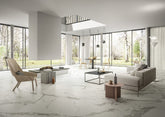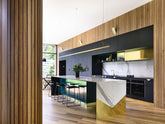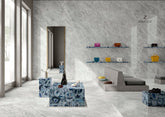Understanding What to Lay Porcelain Slabs On for Ultimate Longevity
Porcelain slabs have steadily risen in popularity for luxury interiors and exteriors, prized for their sleek aesthetic, durability, and versatility. Whether you're a homeowner seeking to elevate your kitchen or bath, or a trade professional sourcing materials for high-end architectural projects, knowing what to lay porcelain slabs on is essential to ensure lasting beauty and performance.
At Zicana Boutique, we specialize not only in luxury materials but in guiding refined clientele through intelligent design decisions. From structural stability to visual harmony, this comprehensive guide explores proper installation surfaces and methods to maximize the integrity of your porcelain slab investment.
As you explore the world of luxury surfaces, be sure to browse our Exclusive Offers Collection, and Use Promo Code WELCOME100 for $100 off any order over $1,000 to elevate your next project with world-class materials—at an exclusive advantage.
Substrate Matters: What Surface Should Porcelain Slabs Be Installed On?
Porcelain is known for its low porosity, scratch resistance, and heat tolerance, making it ideal for both indoor and outdoor applications. However, the secret to long-term performance lies beneath the surface. Here’s what professionals prefer laying porcelain slabs on:
- Cement Backer Board (Indoor Floors and Walls): For dry, interior applications like bathrooms, fireplaces, or accent walls, cement backer board provides a stable, moisture-resistant foundation that pairs elegantly with tiles or large-format slabs.
- Concrete Slabs (Exteriors and Subfloors): Concrete is the gold standard for outdoor porcelain pavers and kitchens. It must be level, cured, and crack-free to deliver a solid base and prevent slab movement or fracture.
- Mortar Bed Systems: A mortar bed beneath the slab allows greater flexibility in leveling, especially useful in large format applications. Expert installers often use bonding agents for additional grip and long-term adherence.
- Fiber-Reinforced Underlayment: Found in advanced interior renovations, these lightweight yet reinforced panels offer sound protection and impact resistance, critical in high-traffic areas.
Each of these substrates must be selected to match the conditions of your project—interior or exterior, load-bearing or decorative. When in doubt, Zicana’s Made-to-Measure Custom Countertops service provides tailored solutions perfect for designers demanding flawless fit and finish.
Preparing the Installation Site: Best Practices for Success
Luxurious results depend on precision prep work. Before laying porcelain slabs, especially those from our highly coveted Porcelain Slabs Collection, be sure the following steps are taken:
- Survey for Level: Use a laser level to verify the evenness of your substrate. Slopes could cause cracking over time.
- Clean Thoroughly: All debris, dust, or residual adhesive must be removed to ensure proper bonding.
- Dampen Concrete (if Applicable): Lightly misting can help improve mortar adherence without oversaturating the slab.
- Use High-Performance Adhesives: Always opt for premium, porcelain-specific bonding agents; Zicana experts recommend flexible thin-set mortars classified as ANSI A118.15.
Proper prep ensures not only secure adhesion but preserves clean grout lines and prevents future delamination—hallmarks of master-quality workmanship.
Weight and Moisture Considerations with Porcelain Installations
Despite their elegant detailing, porcelain slabs—particularly large format or thick options—have considerable weight. Installation surfaces must be structurally sound and built to adequately support loads of 10 to 20 pounds per square foot or more. When installing over drywall, additional framing or support brackets may be recommended for vertical applications.
For wet environments such as outdoor patios or spa bathrooms, ensure your substrate is waterproof or paired with a membrane layer. This extends longevity and prevents freeze-thaw damage in fluctuating climates.
Complementing porcelain’s water resistance with weatherproof substrates and expert sealing techniques yields specimens of performance and poise. If you're considering mixing materials, Zicana’s Granite Slabs Collection also pairs beautifully with porcelain in statement walls, countertops, and fireplaces.
Compatible Use Cases for Porcelain Slabs
Porcelain’s ability to mimic natural stone while providing next-level practicality has made it a favorite across a wide spectrum of luxury design applications:
- Kitchen Countertops and Waterfalls: Ideal above cabinetry or on sleek waterfall edges, porcelain lends a contemporary and sanitary work surface.
- Fireplace Surrounds: Its flame resistance makes it fire-safe and stunning in our Fireplace Collection.
- Outdoor Patios and BBQ Islands: UV-resistant porcelain slabs excel in open-air elegance—provided they rest on reinforced concrete pads.
- Bathroom Panels and Vanity Tops: Resistance to moisture and mold make it ideal in spa-inspired interiors sourced from our Bathroom Decor Collection.
Where solid preparation meets exquisite taste, porcelain slabs shine across every inch of your vision. Don't forget to take advantage of our $100 Welcome Offer for new customers ready to begin their Zicana journey.
FAQs: Porcelain Slab Installation and Support
Can porcelain slabs be installed directly over tile?
Yes, in certain interior cases. If existing tiles are firmly adhered, level, and crack-free, porcelain slabs may be bonded over them using a premium thin-set adhesive. Surface roughening and a bonding agent are strongly recommended to maximize grip.
What is the thickness required for a porcelain slab substrate?
A sturdy base is essential. For floors, concrete substrates are often 4 inches thick; for countertops, a ¾-inch minimum plywood plus cement board is recommended. Always consult a structural engineer for oversized installations or suspended spans.
Do you need expansion joints with porcelain slabs?
Yes. Luxury slab installs should always include movement joints to accommodate thermal expansion and contraction. Typically integrated every 16 to 20 feet, they help prevent edge lifting or cracking over time.
What adhesive is best for exterior porcelain installed on concrete?
A high-performance, flexible polymer-modified thin-set mortar rated for freeze-thaw environments is ideal. Look for ANSI A118.15 classification for the best performance.
Lay the Foundation for Elegance with Zicana Boutique
Choosing the right foundation and adhering to best practices is pivotal in realizing the sophisticated vision that porcelain slabs can deliver. Whether crafting a one-of-a-kind kitchen, a serene bathroom space, or an architectural facade, the key to beauty that lasts lies in understanding what to lay porcelain slabs on.
Explore our full Porcelain Slabs Collection and high-performance offerings from our Fiandre Collection or Laminam Collection today. For personalized assistance, our expert design consultants are ready to help you transform your surface into a masterpiece. And remember to take advantage of our welcoming $100 off promotion on orders over $1,000—exclusive to new clients who seek only the highest quality.



















